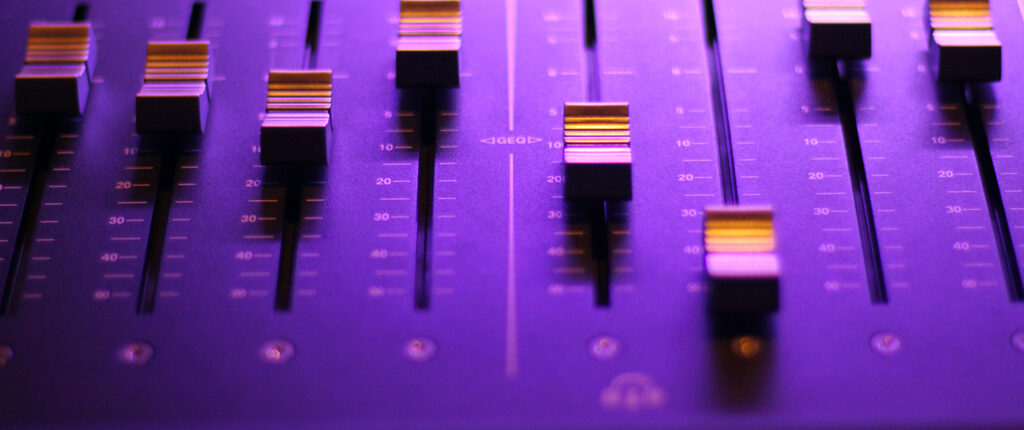Among the multitude of effects pedals that populate the musical universe (and our guitarist’s hearts), compression pedals often remain in the shadows . While distortion and delay pedals captivate attention with their bold sounds, compressors work silently to equalize sonic dynamics. It’s a subtle paradox: these pedals, rarely celebrated and often forgotten in discussions, exerta fundamental influence on sound coherence and musical expressiveness. In this exploration, let’s plunge into the world of this often overlooked or misunderstood pedal!
What is a compression pedal?
Let’s start with the basics… The compressor is a pedal used to regulate the dynamics of an audio signal. In other words, it reduces the gap between the softest and loudest notes, creating a more uniform sound. This is achieved by lowering the volume of strong signals and amplifying weak ones. The result? A more controlled dynamic range, ideal for balanced live performances or impeccable recordings.

Why use a compression pedal?
Using a compression pedal offers many advantages to guitarists. Firstly, it smoothes out variations in volume, making every note equally audible and percussive, whether played softly or powerfully. This is particularly useful for playing techniques such as fingerpicking or tapping, where dynamics can vary considerably.
Compression pedals are also often used to extend note duration (sustain). By reducing dynamics, they allow notes to remain present in the mix for longer, creating a more sustained, controlled sound.
There are several types of compressor pedal, each offering distinct characteristics. Transistor compressions offer a warm sound, tube compressions add warmth, optical compressionsreact smoothly, multiband compressions allow precise control, and parallel compressions combine compressed and uncompressed signal. Some models aim to reproduce the sound of studio compressors in pedal format.
How do you set up your compression pedal?
Compression pedals often offer a variety of settings, allowing guitarists to tailor their sound to their specific needs. The main setting is usually ‘Sustain’ (or ‘Attack’), which controlshow long the compression is applied. A higher sustain setting will accentuate note sustain, ideal for smooth solos, while a lower setting may be preferable for a more percussive sound. Level (or Output) adjusts the overall volume of the signal after compression. A well-adjusted level avoids unwanted volume peaks and ensures harmonious integration into the mix. Finally, the ‘Threshold ‘ determines the threshold at which compression is activated. A low threshold will engage compression more frequently, suitable for softer playing styles, while a higher threshold will suit guitarists who wish to compress only the loudest notes. Of course, it all depends on the pedal you choose!

Multiband compressors, a more advanced version
Multiband compression pedals are sophisticated devices designed to offer more precise control over the dynamics of the audio signal. Unlike conventional compressors, multiband pedals divide the audio spectrum into several frequency bands, enabling each band to be compressed independently. This means they can treat treble, midrange and bass separately, tailoring compression specifically to each frequency. This approach offers an exceptional level of customization, enabling guitarists to sculpt their sound with remarkable precision. Multiband compression pedals are prized for their ability to dynamically equalize sound, preserving the clarity of high notes while controlling bass.

Where to place it in your effects chain?
The positioning of a compression pedal in the effects chain is crucial to maximize its benefits. In general,it is placed upstream of most modulation (chorus, flanger, etc.) and delay pedals, but downstream of gain pedals (overdrive, distortion) and the tuner. This position allows compression to act on the raw signal before other effects modify it.
Placing a compression pedal at the end of the chain can still ensure uniform compression across the entire signal, precisely sculpt the final sound after other effects, and accentuate end effects, offering a personalized approach to shaping the overall dynamics of the sound.
Need to know more about chaining your pedalboard?
Some emblematic models

Boss CS-3 Compression Sustainer
This iconic Boss pedal is renowned for its reliability and versatility. It offers transparent compression while preserving the natural character of the guitar sound, making it a popular choice for a wide range of musical styles.
MXR Dyna Comp
Used by legendary guitarists such as David Gilmour, the MXR Dyna Comp is famous for its simplicity and smooth compression effect. It adds pleasant sustain without compromising playing dynamics, making it ideal for expressive solos.


Keeley Compressor Plus
Appreciated for its exceptional sustain control, the Keeley Compressor Plus offers transparent compression with the ability to subtly adjust the character of the sound. It is appreciated by artists such as John Mayer for its balance between transparency and coloration.
Empress Effects Compressor
Renowned for its cutting-edge compression technology, this pedal offers advanced features such as multiband compression options. It offers maximum flexibility and outstanding audio quality, making it the choice of many professionals.


Origin Effects Cali76 Compact Deluxe
Inspired by legendary transistor compressors, the Cali76 Compact Deluxe delivers a rich, warm sound. Equipped with features such as precise controls and ratio options, it is appreciated for its ability to sculpt sound with great precision.
Compression pedals allow you to sculpt and perfectly control the dynamics of your sound. Whether you want to maintain sonic coherence on stage or explore new horizons in the studio, these faithful companions deserve their place in the toolkit of every passionate guitarist .










